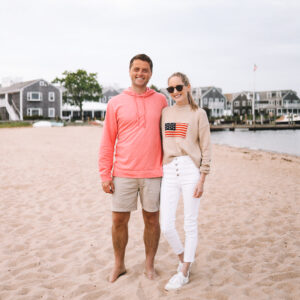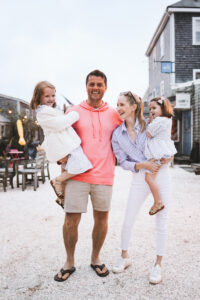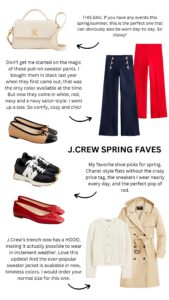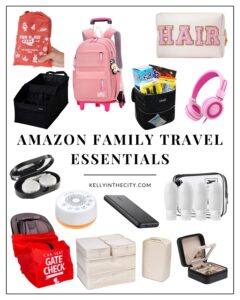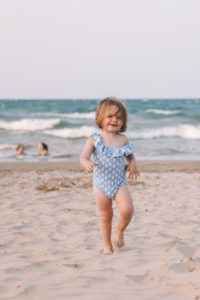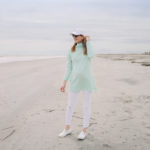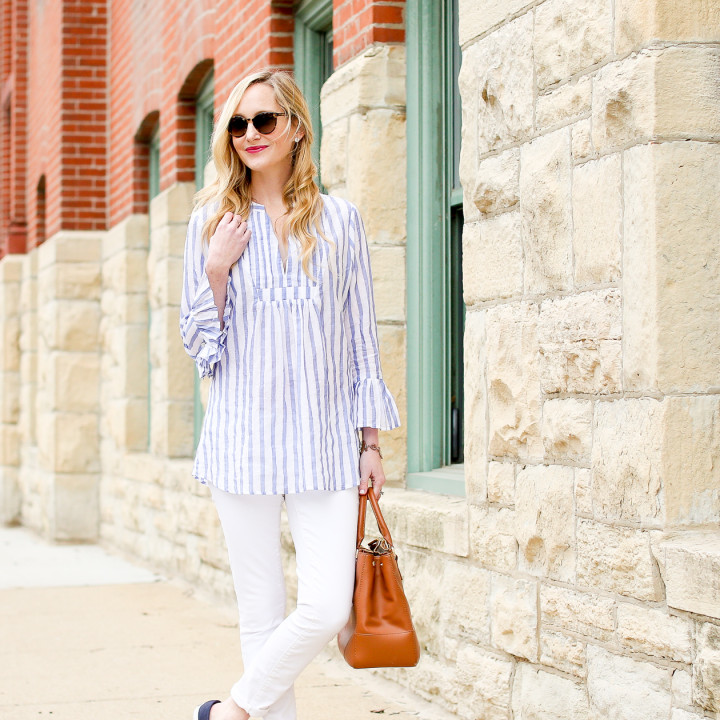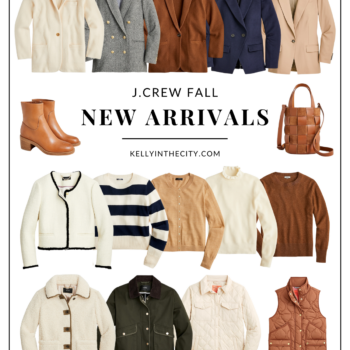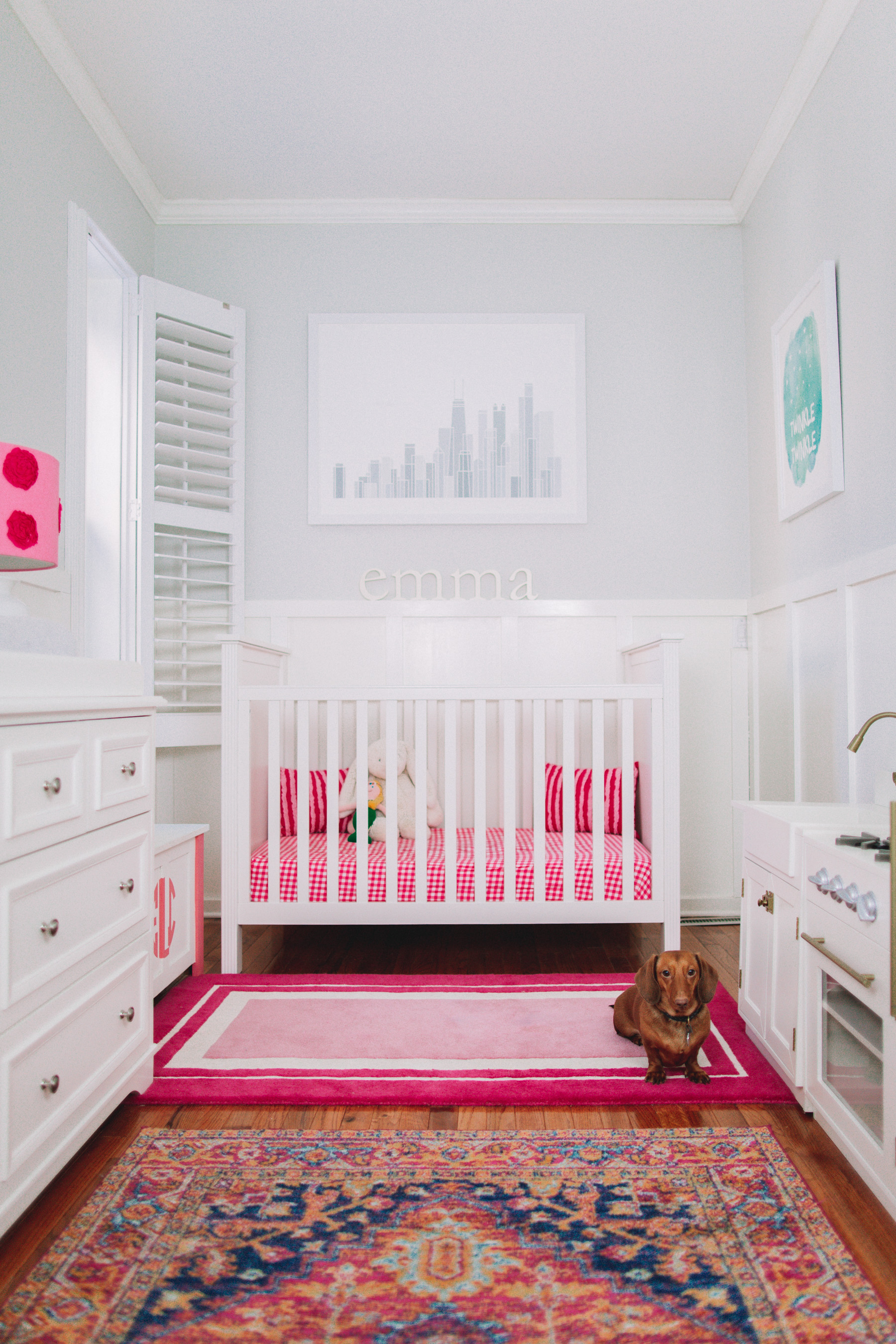
All product links can be found at the very bottom of post!
If I’ve learned anything from our KonMari challenge so far, it’s that we’re people whose home can appear neat and orderly, but just open our drawers and closets and the truth will be revealed. 🙈 And WHOA, was that the case when we got to Emma’s room!
For the last 2.5 years, the nursery has gone from “classic baby” to “bohemian baby” to “fancy baby” (😂) to “hot pink-loving toddler.” And while a lot has changed in the room, the one thing that’s remained a constant is the overflow from the closet and dresser. When Emma was born, we experienced the most amazing outpouring of generosity from friends, family and blog partners in the form of beautiful gifts. (It was seriously so touching.) But the number of presents–coupled with how quickly children grow out of clothing–caused things to spiral out of control very quickly. We just couldn’t keep up with it all, nor could the nursery!
This past fall, the room started to cause me major anxiety, haha.
Even though we did mini clean-outs from time to time and utilized every square inch of storage, I think we were probably using about a tenth of what Emma owned only because we couldn’t see (or reach) the rest. And the closet and dresser were so packed that I didn’t even know where to start with a proper clean-out! But we needed one. I mean, even getting Emma dressed in the morning was becoming challenging.
A few weeks ago, we finally set aside time and did it–first clothing, then everything else–and I’d say we got rid of roughly 75 percent of what was previously in the room using author Marie Kondo’s KonMari Method, which I talk about in this post. (Where did it all go? We donated/trashed/gave away/stored for Baby #2. If you’re looking for great places to donate to in Chicago, I covered that in this followup post!)
I really can’t express what a HUGE difference it’s made in our day-to-day life. Dare I say that spending time in there is actually peaceful now. But before I get to that, here are our best tips for how to KonMari children’s rooms:
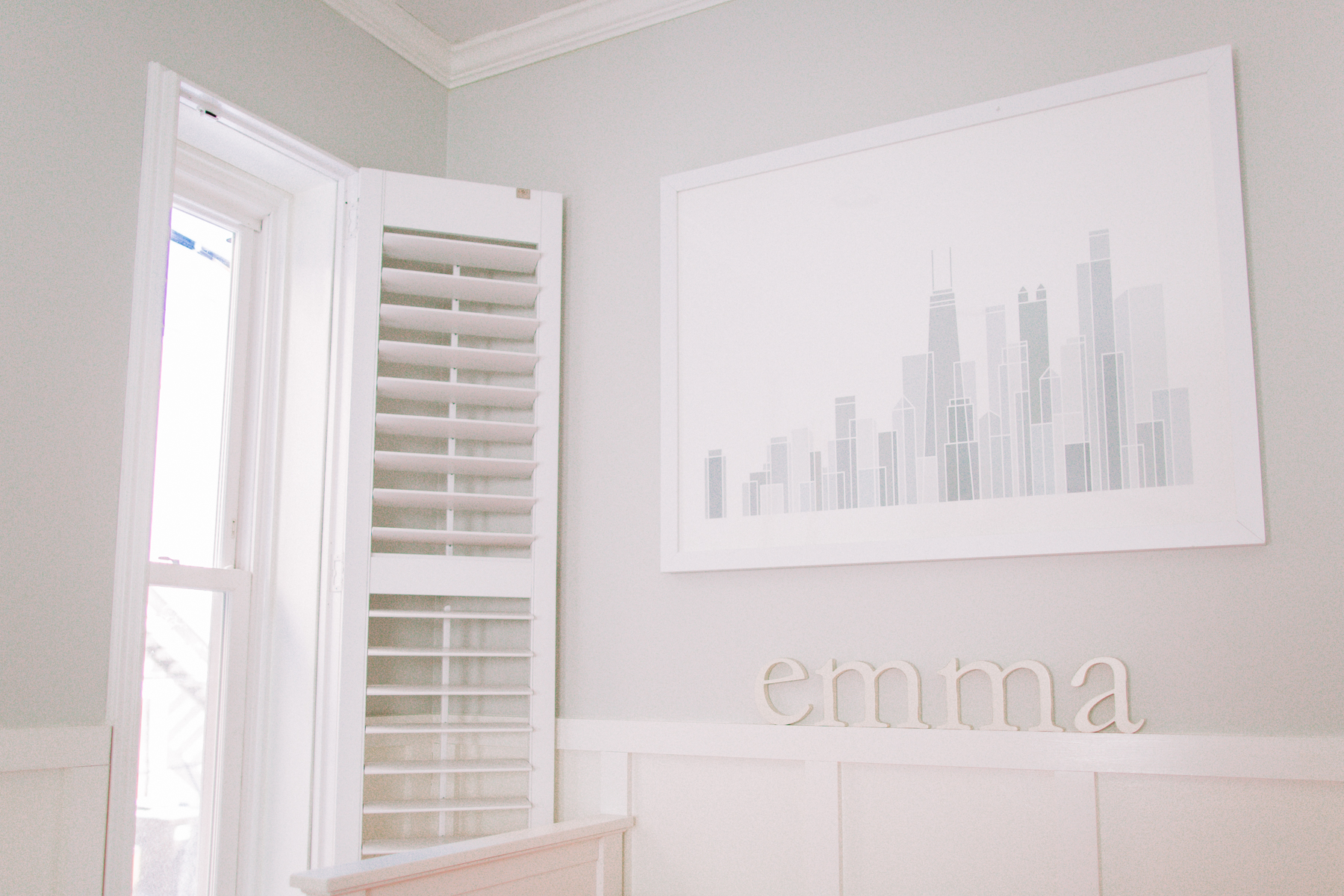
Tips for How to KonMari Kids’ Rooms
Set aside time and come up with a plan
For a lot of parents, ourselves included, the hardest part about doing this is figuring out logistics. I’m sure it’s much easier to do it when the kids are older, but how, exactly, do you do KonMari with a baby or toddler in tow?! From my personal experience, it’s way too difficult to do it when they’re home and awake as they tend to only make the underlying problems worse 😂, and I really can’t justify taking large chunks of time off from work to tidy. (I work from home, but work’s still gotta get done!)
The solution for us was setting up a pack ‘n play in the office/guest room, and having Emma sleep there for a couple of days so we could work on the project. By doing this, we were able to make progress at night after she went to bed and in the morning before she woke up. (We rely on naps for getting actual work done, but definitely consider taking advantage of this time if it’s doable for you!)
Do the majority of it while the children aren’t there, but involve them for specific parts of the process
Keep in mind that I have a toddler who really doesn’t care about much, save for a few favorite toys. If you have older children, though, you’ll likely want to consider this more since they could care very much. Every kid is different! I personally remember asking my mom to clean out my room without telling me so I wouldn’t have to make tough choices, haha. My brother, however, was the exact opposite, and really wanted to go through everything and make careful decisions about what he kept and what he tossed. When in doubt with older kids, I’d suggest asking them if they want to be involved with the process.
Considering Emma is 2.5 years old, we only involved her with cleaning out the sentimental stuff. (Meaning things she could be attached to, like toys.) I’ll talk more about that below, though, in the “Sort through sentimental things” section!
Embrace tidying by category, in order
If you’re not familiar with the KonMari Method, Kondo says that it’s of the utmost importance to tidy by category, in this particular order: Clothing, Books, Papers, Miscellaneous (Kitchen, Bathrooms, Garage, Kids’ Stuff, etc.), and then Sentimental Items. The reason behind this is simple: if you do it by room, you’ll likely find yourself getting distracted, and suddenly hours have passed and you’ve gotten very little accomplished, all because you found an old photo album and got sucked in. ;) Kondo argues that if you declutter in her order, that you’ll be far better prepared and equipped to tackle the tougher categories when you get to them.
For Emma’s room, we really did stick to this, and it worked extremely well. We did clothing one evening, and once that was finished, we worked on books, papers, miscellaneous and sentimental stuff–but only when we got to books, papers, miscellaneous and sentimental stuff for the rest of the house, too.
I know, I know. This approach sounds counterintuitive; why in the world wouldn’t you want to do the whole room at once to get that awesome sense of accomplishment and completion?! I was hesitant at first as well. But Kondo is RIGHT. From my two months’ experience with the KonMari Method, I can wholeheartedly say that the burnout factor is real when going room-by-room, simply because the task is often extremely overwhelming. When going category-by-category, though, the task is much smaller, and therefore less daunting.
Trust Kondo! We’re far more likely to finish our project if we actually follow the method.
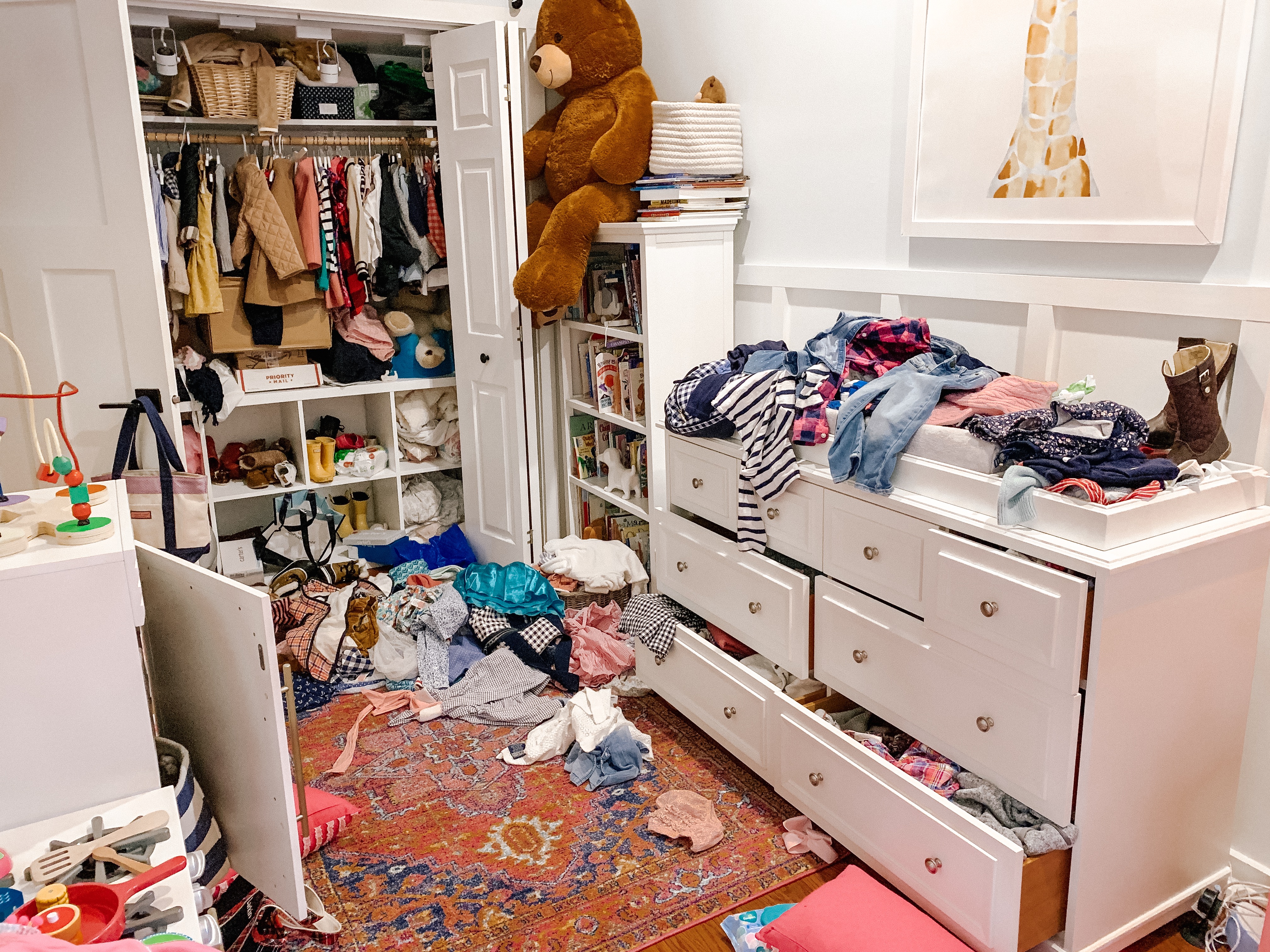
In process: This was taken right after we started emptying the contents of the dresser and closet. TERRIFYING, right? I’m only sharing because come on: your kid’s room can’t be worse than THIS. 😂

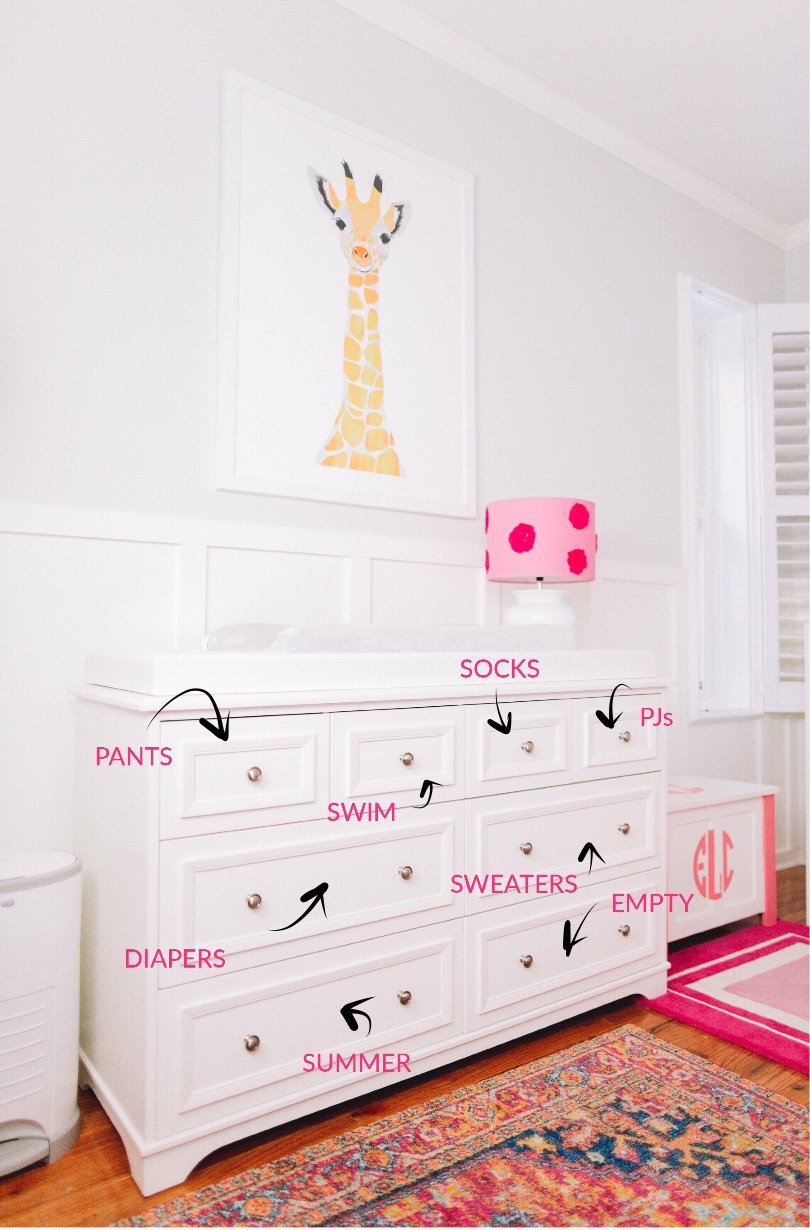
After
Tackle clothing first
Are you on board? I hope so. ;) Because first comes clothing, which is probably the main source of the problem. Here’s what to do:
-
Take out the contents of dressers/closets and place it into the middle of the room:
If your child’s room is minuscule like ours, you can move it into a larger room, like the living room. That’s what we did!
-
Label up to five bags, bins or boxes:
Donate/Trash/Store/Family+Friends/Sell
-
Ask yourself “What sparks joy?” in terms of both what sparks joy for you, but also for your child:
I would not recommend, for example, tossing your toddler’s favorite Elsa costume dress, even though you hate it and never want to see it again, because it brings her ALL the joy.
-
Keep only what fits and is in good shape:
Be ruthless, and follow the same guidelines that I outlined in the post about cleaning out adult closets. Arguably, cleaning out a child’s room using the KonMari is more challenging than doing it to your own, since children grow out of stuff so quickly, and the potential to become guilt-ridden is real. How could I possibly, for example, get rid of that stunningly gorgeous sweater that I probably paid too much for originally?! Or that adorable $14 pair of Gucci lookalikes from Amazon?! (They’re sold out, but these are really similar. 😂) Everything is just so cute. But if it’s too small or is tattered, it’s time to let it go.
Remember, you have five potential options for every piece of clothing: donate, trash, store for siblings, sell, and family + friends. Knowing that the stuff will go to someone who can use it will significantly help you part with it! (Btw: We have several tubs filled with my favorites for Baby #2 if we have a girl.) Oh, and once you’re done with the clean-out, get those bags to their intended destinations ASAP. No keeping them around for months!
-
Adopt the KonMari folding method, and assign dresser drawers:
The folding method makes a BIG difference in terms of how much we can store in Emma’s dresser. Scroll down to see; it’s kind of crazy! When using the folding method, everything’s visible, too… and as a result, Emma now wears all her clothing. (Not just the stuff on top.) We can determine what staples need to be replaced and when, too. Here’s how to do it. It doesn’t take more time; I swear. Similarly, assigning dresser drawers to categories of clothing ensures that you’ll maintain this level of organization. We used Emma’s top four drawers for smaller, frequently used items: pants, swimsuits (she swims every day at peewee), socks and PJs. The two bigger drawers underneath those are reserved for diapers and sweaters/tops… and then below those, we store seasonal clothing and have an empty drawer. <–SHOCKING!
-
Invest in quality hangers, and organize by item:
It’s a game-changer. We use these hangers, which are also available via Ikea for a lot cheaper if you’re willing to submit yourself to a day of torture for the savings. ;) I love the wood, as the clothing slides on and off easily… but these velvet hangers are major space-savers! I try to hang types of clothing in sections: outerwear, tops, everyday dresses, special occasion dresses, and out-of-season stuff. Honestly, I can find what I’m looking for much more quickly this way.
-
Consider shoe storage:
Otherwise the shoes will be everywhere, and you’ll never be able to find matching pairs! We had an Ikea Kallax shelf in the closet, but we turned it on its side so the shoes would be more at eye level. I LOVE it. I can see all her shoes now, and we’re rarely missing any.
Then clean out books
I’ll go more into this in my next post, but Mitch and I went “bookless” back in New York when we used to bounce from apartment to apartment, as books were awful to move every year. It was hard at first because let’s be honest: there’s just nothing like having a real book in your hands. (And as an English major, former reporter/editor, and retired English teacher, the love is there.) But since we were adults and already had an instilled love of reading, we decided to let them go in favor of Kindles, and we haven’t looked back. For now, it works for our short-on-space city lifestyle.
That said, we feel that it’s incredibly important for Emma to own physical books–and a ton of them. Several times a day, we sit down on the couch or in her room and read together, and we’ve seen her advance in ways we never thought possible because of it. Still, Emma had outgrown some of the true baby books, and her shelves were overflowing.
We followed the same method that we did for her clothes, and piled all the books onto the floor. We then organized them into three piles: keep for Baby #2, donate, and trash. (Also, we threw out very few; just the ones that were truly trashed.) After that, we put them back on the shelves in size order. That’s not a 100-percent necessary step, but it makes the room look so much more organized, and I think it’s easier to find particular books this way!
Digitize artwork (documents) and print in books
The only papers that Emma had in her room were art projects that we made together or that she made at her peewee program. If you read this somewhat controversial post, haha, you know that we started digitizing all of Emma’s artwork last year, and printing them in books. We’ve literally saved zero original pieces, and it’s been GREAT! Now, we actually look at the book, whereas before, the artwork was just shoved in drawers. I can’t recommend doing this more. It doesn’t even take that much time!
I take pics of everything on my iPhone and store them in the cloud, and then, at the end of the year, make a book through my photography printing company. There are, though, so many other awesome options out there. I love MPix, but I’ve also heard great things about Artkive!
Part with the miscellaneous stuff
This is a tough one, but it’s important to say goodbye to duplicates and things that were once useful but no longer serve a purpose. For example, we had approximately one BILLION blankets because that’s a very popular baby gift to give. They were all so nice, but we decided to keep three and donate the rest. That’s just one example, though. In Emma’s closet, I found night lights, extra baby monitors that were missing pieces, stroller accessories, pack ‘n play attachments, extra parts to god knows what, old bedding–you name it and it was in there. Gooooodbye…
Sort through sentimental things (i.e. toys) and create a plan for storage
Last comes the sentimental stuff, which is mostly toys. This was actually the easiest category for us, since we knew what Emma’s favorites are. Those were set aside, and then once again, we piled everything in the middle of the room, and sorted through it. I should note that we did one round without Emma present; we donated everything that she’d truly outgrown, and kept and stored a handful of favorites for Baby #2.
And then we asked Emma to help with “round two.” We simply explained that we had too many toys, and that we had to decide which to keep and which to give to other children who would be able to give them more love. Emma was very much on board with this, and she totally amazed us by choosing several toys to give to the “other kids.” (I think because she must have remembered donating quite a few new toys that blog companies sent her over Christmas! So happy we did that.)
In the end, we only had a manageable number of toys, an everything had a place. For storage, Marie Kondo recommends clear plastic bins, that way everything is visible. I haven’t done this yet simply because I didn’t want to be buying more stuff during a clean-out (seemed counterintuitive), but I probably will in the future when we move.
Create fun tidying procedures with your child
Once the project is complete, take time to create tidying procedures with your child. Emma is only two, but we’ve been able to teach her to put her shoes away and her clothing in her hamper–which she does with pride and almost without thinking now! My hope is that this stays with her in the long run, and that she’ll reap the rewards of being a tidy person, too.
Similarly, we put our toys away before leaving the room or at least before going to sleep. It was a little bit of a battle at first, but now Emma happily does it with us. We give her hugs and high-fives at the end, and she loves that. ;)
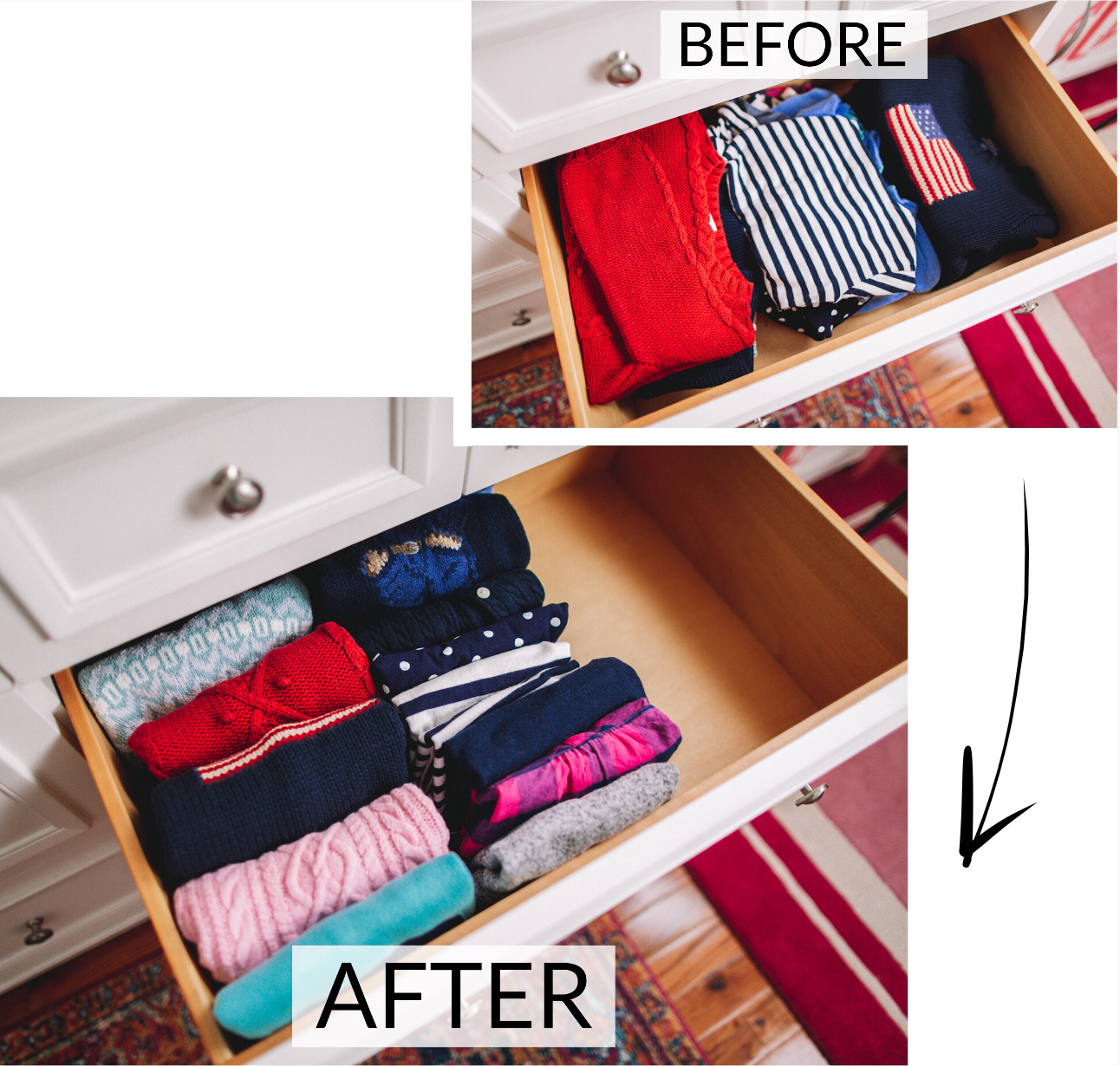
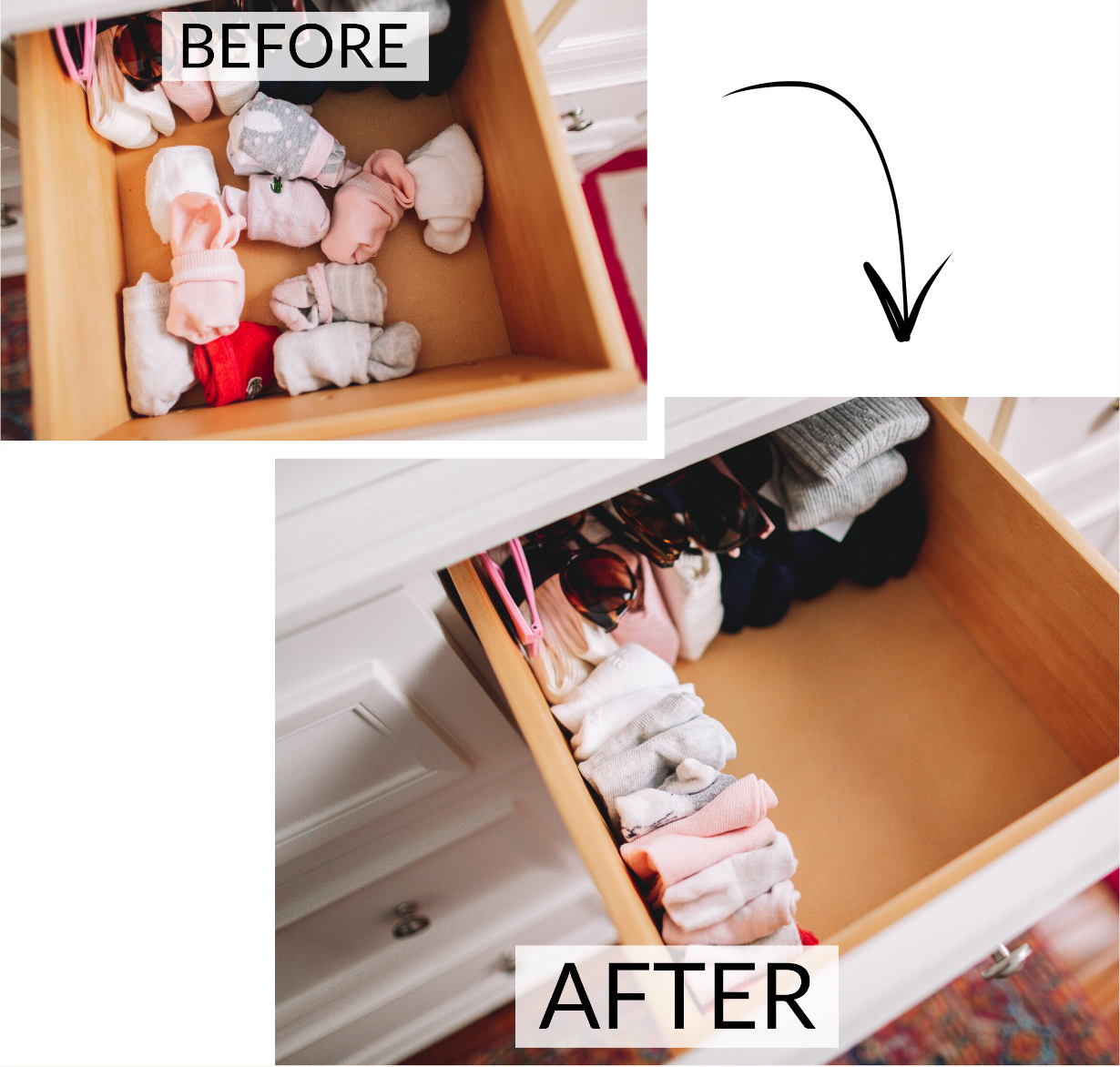
How Emma’s tidy room has impacted our lives
-
Getting her ready is so much easier and more enjoyable:
Before we embraced the KonMari Method, getting Emma dressed was rough. So much of what was in her closet and dresser was disorganized and didn’t fit, and putting together outfits that actually worked was a challenge! Now, though, everything has it’s place, and when Mitch is dressing her, he doesn’t even have to ask me to help. Emma also looks way more stylish, haha. Her outfit game is SO much stronger now. 😜
-
There is little to no spillage into the rest of the house:
Because Emma didn’t have much space to play in her room before the clean-out, she’d bring the toys out into the living and dining rooms, and the house would quickly fall into disarray. But no more! Since the nursery is no longer cluttered, she’ll actually play in there, and the stuff–for the most part–stays put.
-
Her room has become a peaceful, relaxing place where we actually hang out:
Similarly, we now hang out as a family in her room. It’s nice. Before, it made me kind of anxious and sad… but now it’s lovely! We read, play with her toy kitchen, and play dolls. Yes, it’s tiny, but we’ve finally made it work well for us.
-
It’s easier to stay on top of the laundry:
Less clothing = less laundry. It’s simple. I do one load of laundry for Emma per week now, and that’s it!
-
We’re more mindful and save money:
I used to buy a lot more for Emma because I thought she needed it. But in reality, she already had it. I just couldn’t find it, haha! Now, I only buy what needs to be replaced. For example, last week, I realized we were down to two pairs of jeans that fit. I bought a few more pairs… but that’s it, because that’s all she truly needed.
-
Emma values her possessions more, and has become more responsible:
She takes better care of her stuff now! Before, there was just so much, and it was constantly being thrown around and shoved into places for storage. After KonMari, though, everything had a place, and therefore taking care of her things is easier. Because she can now see everything, she plays with nearly all her toys, too. (Whereas before, she just reached for whatever was on top!)
Any tips I missed for how to effectively KonMari kids’ rooms? Or suggestions on how to maintain them? Let us know in the comment section below! *Always* open to new ideas!
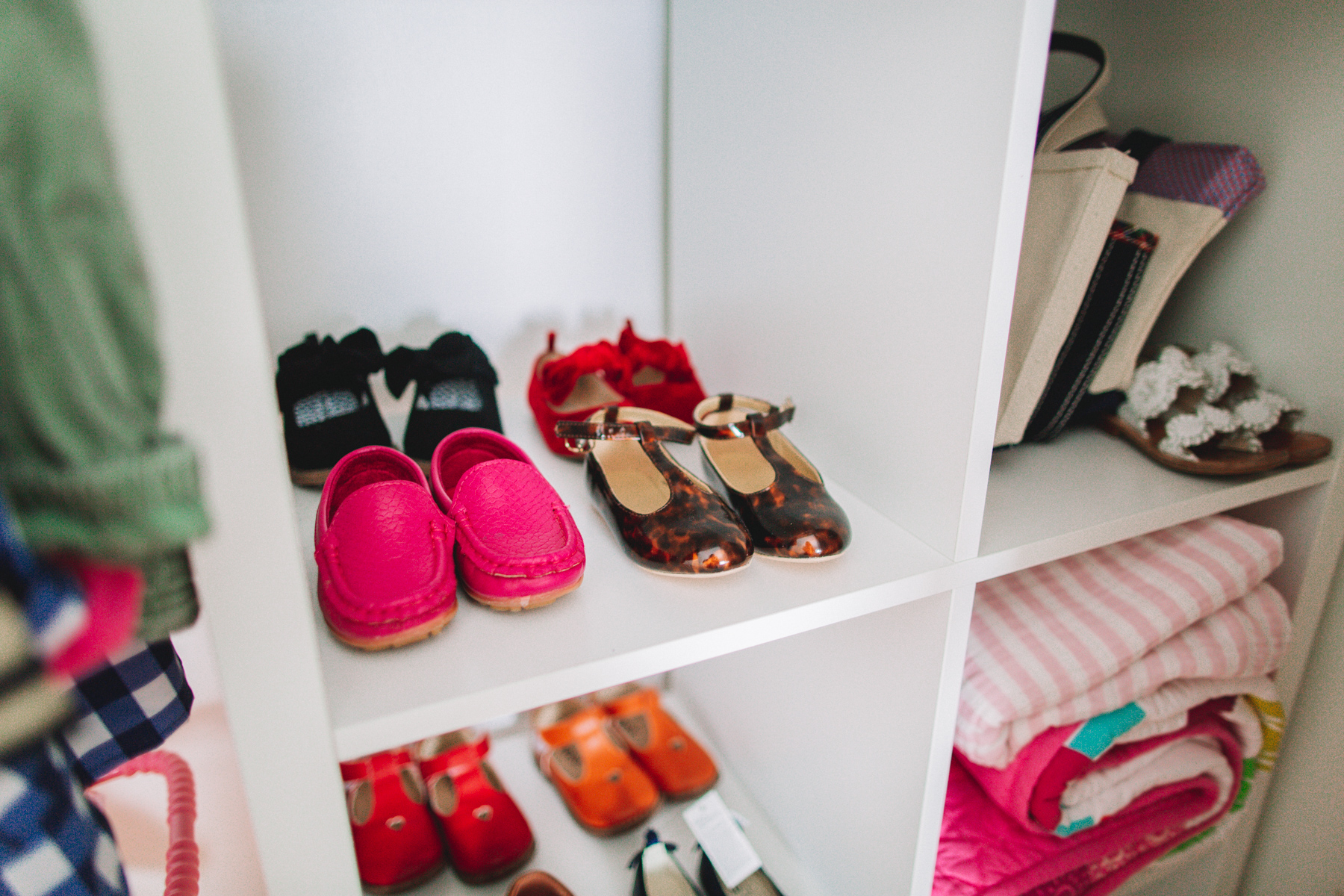
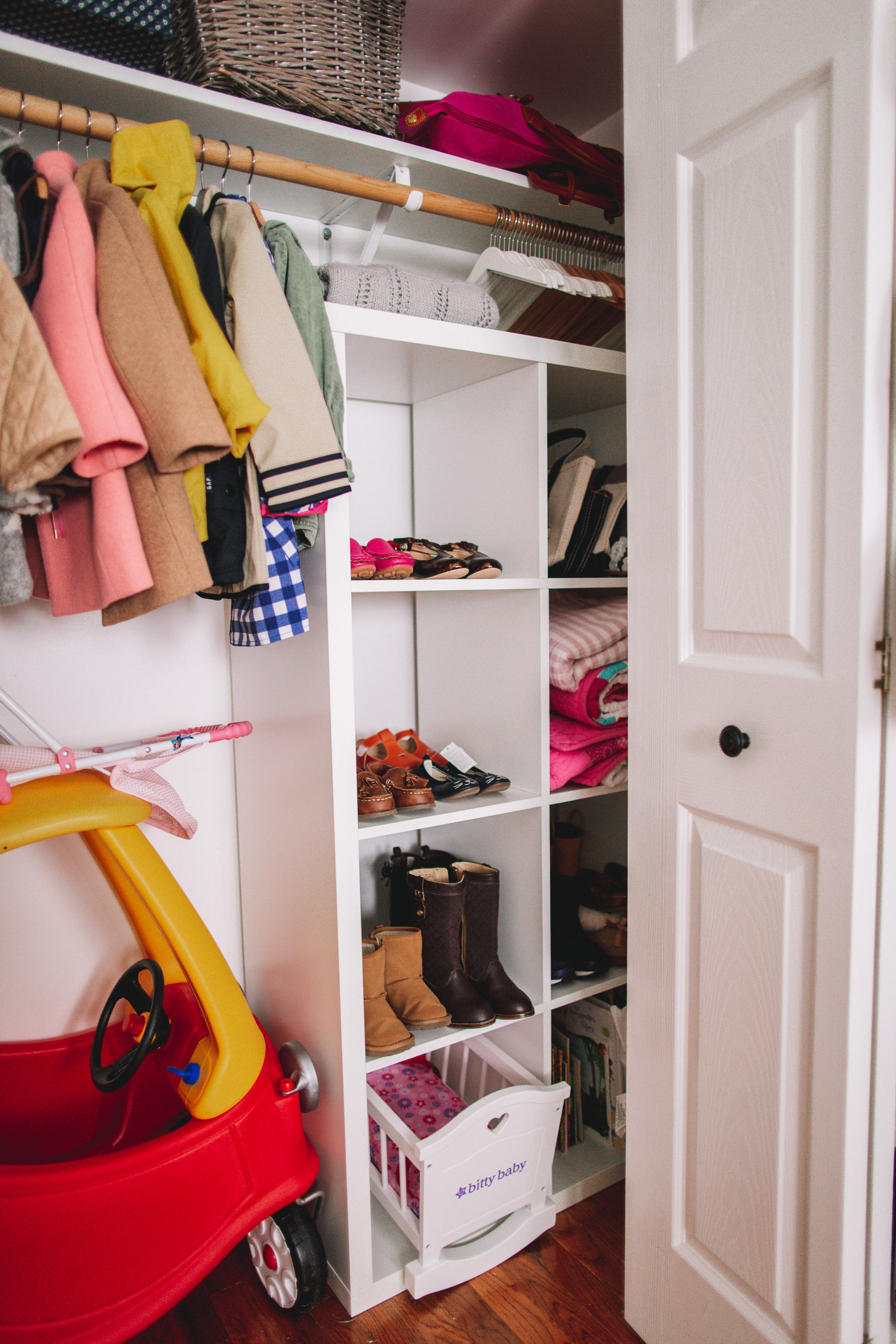
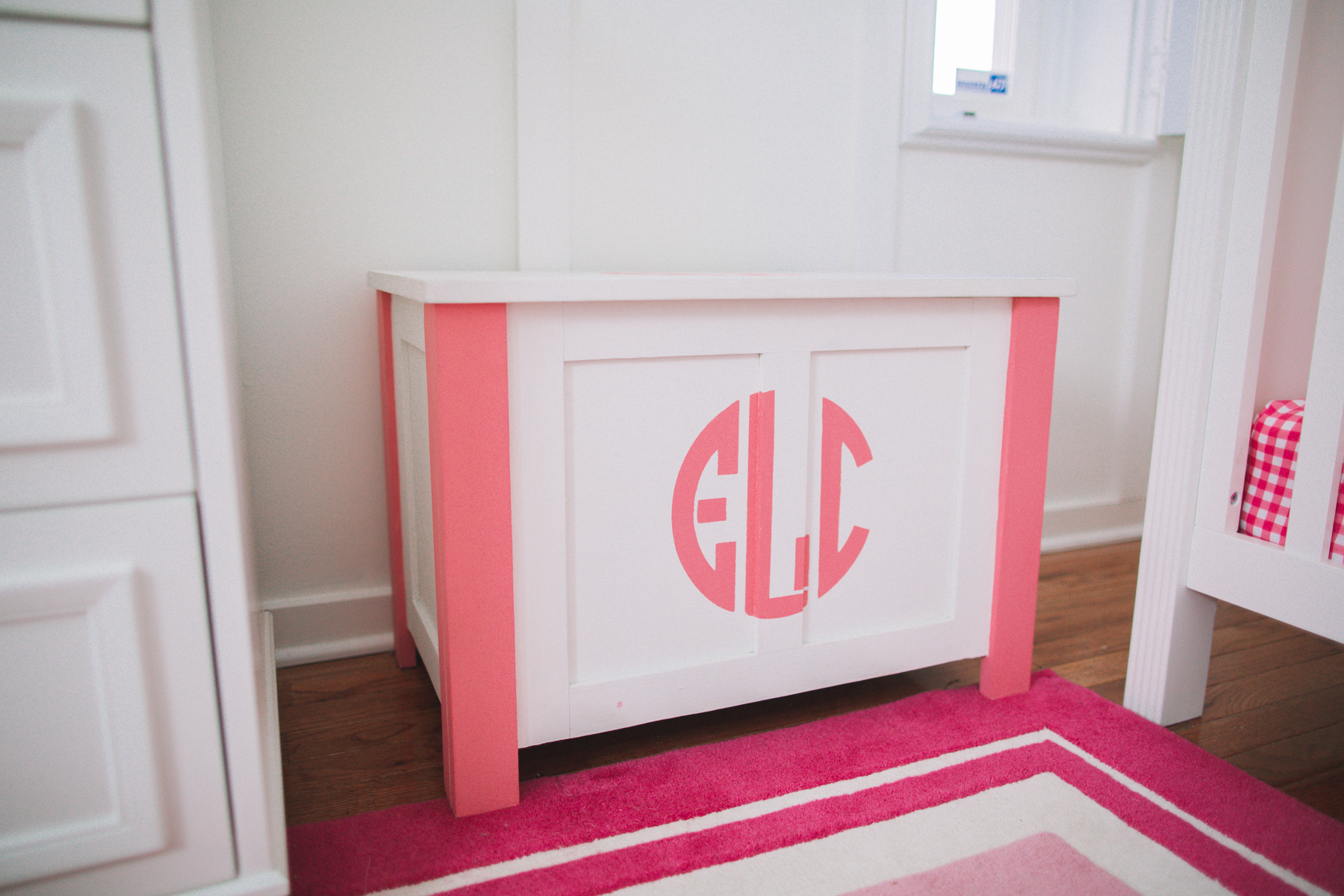

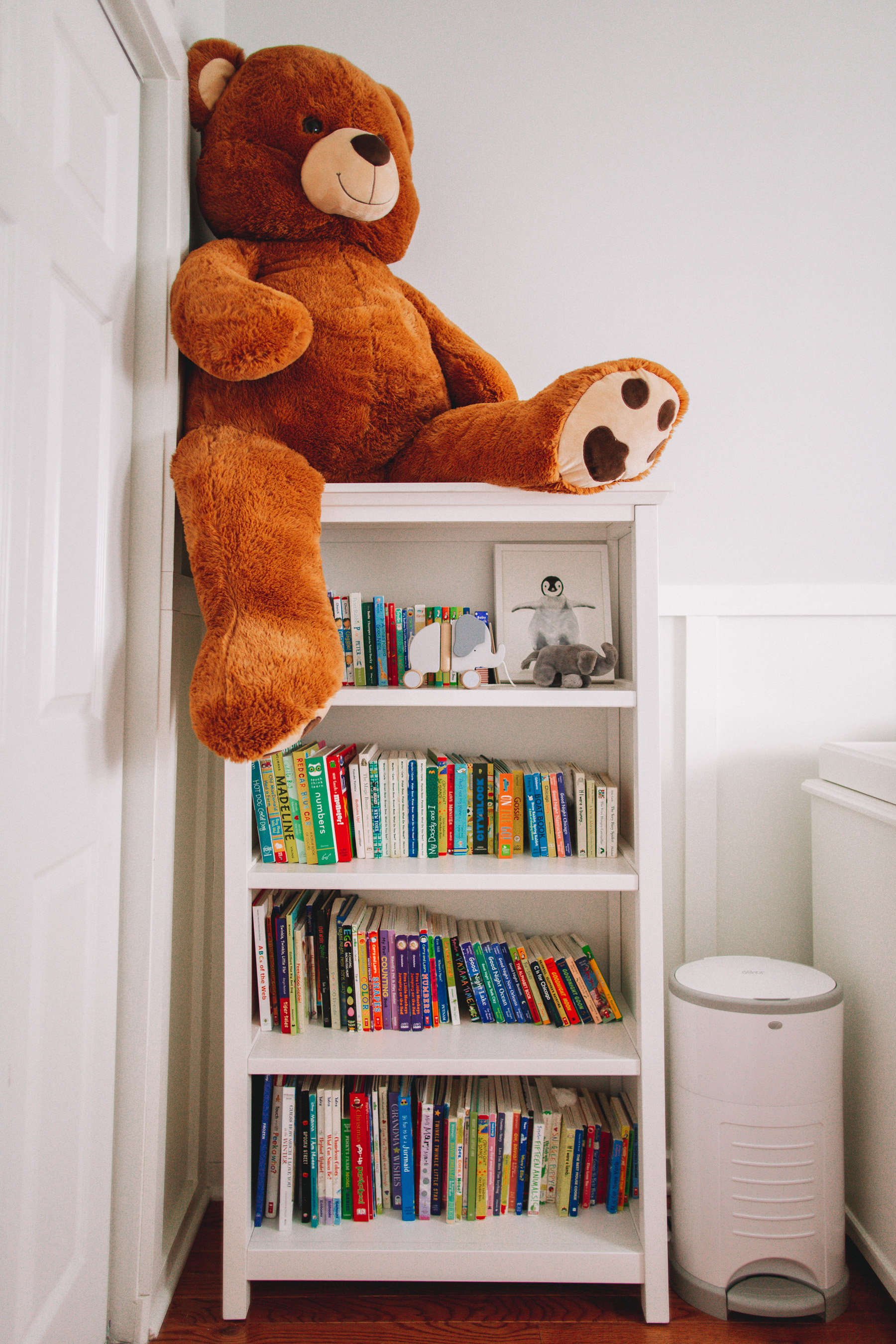
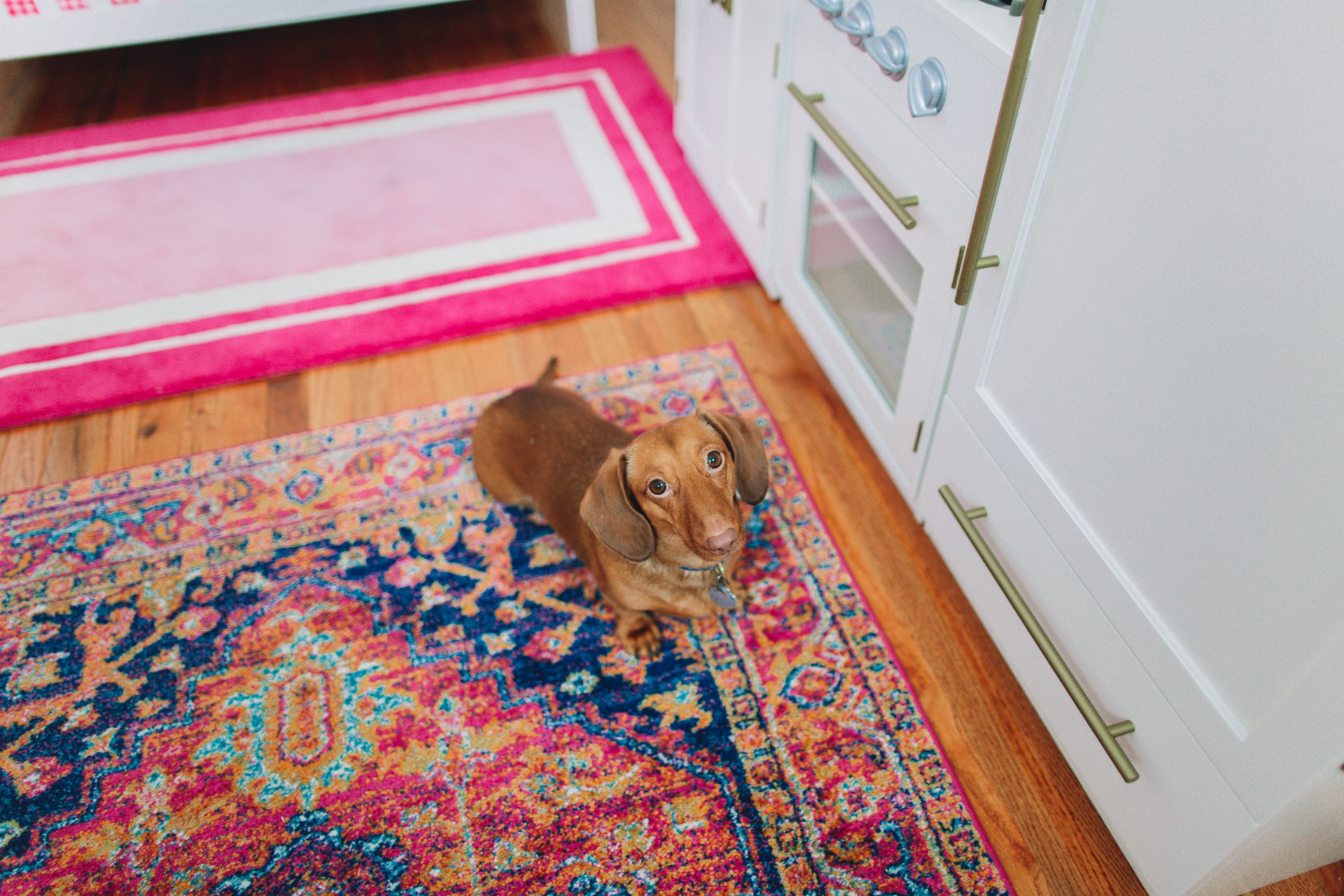
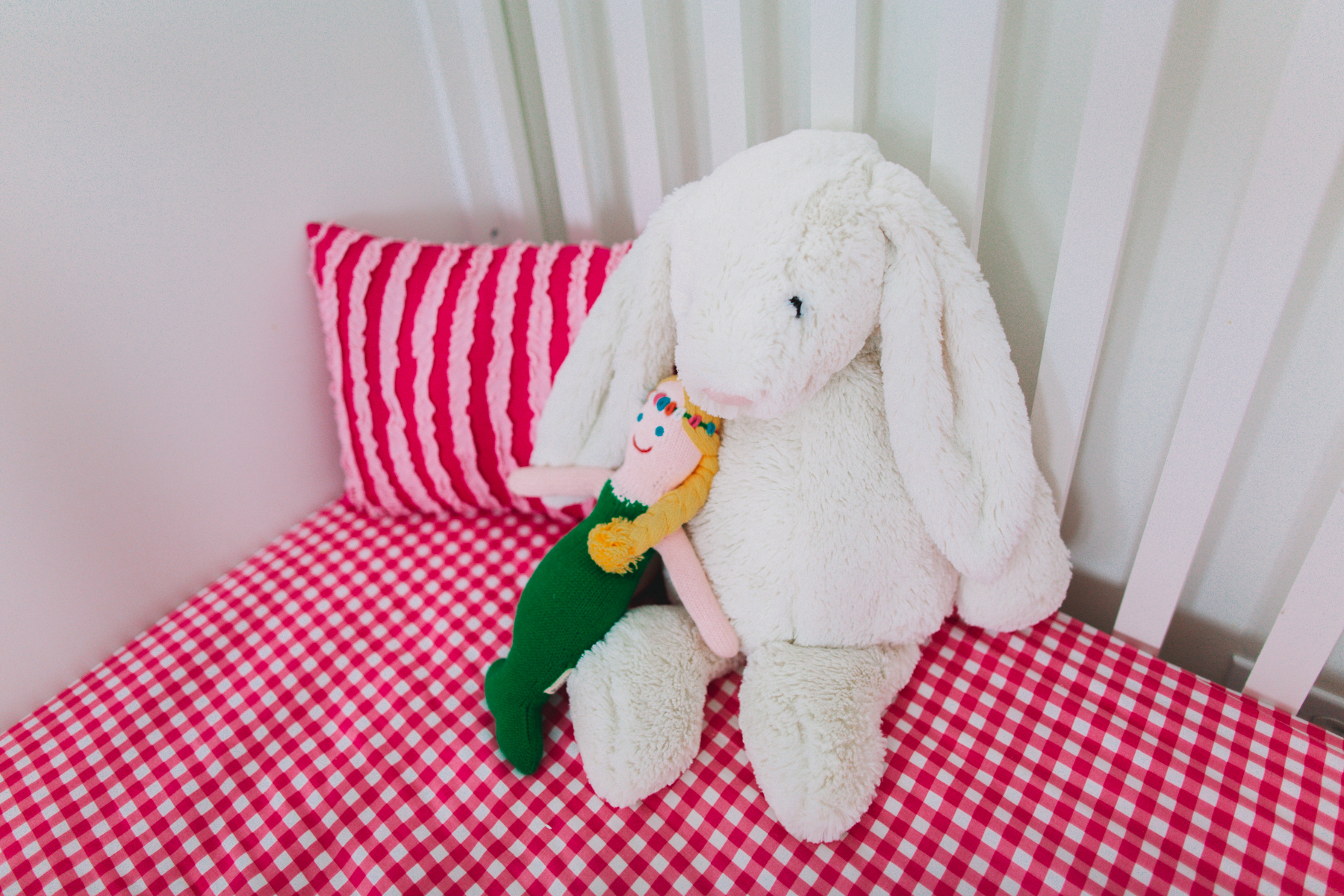
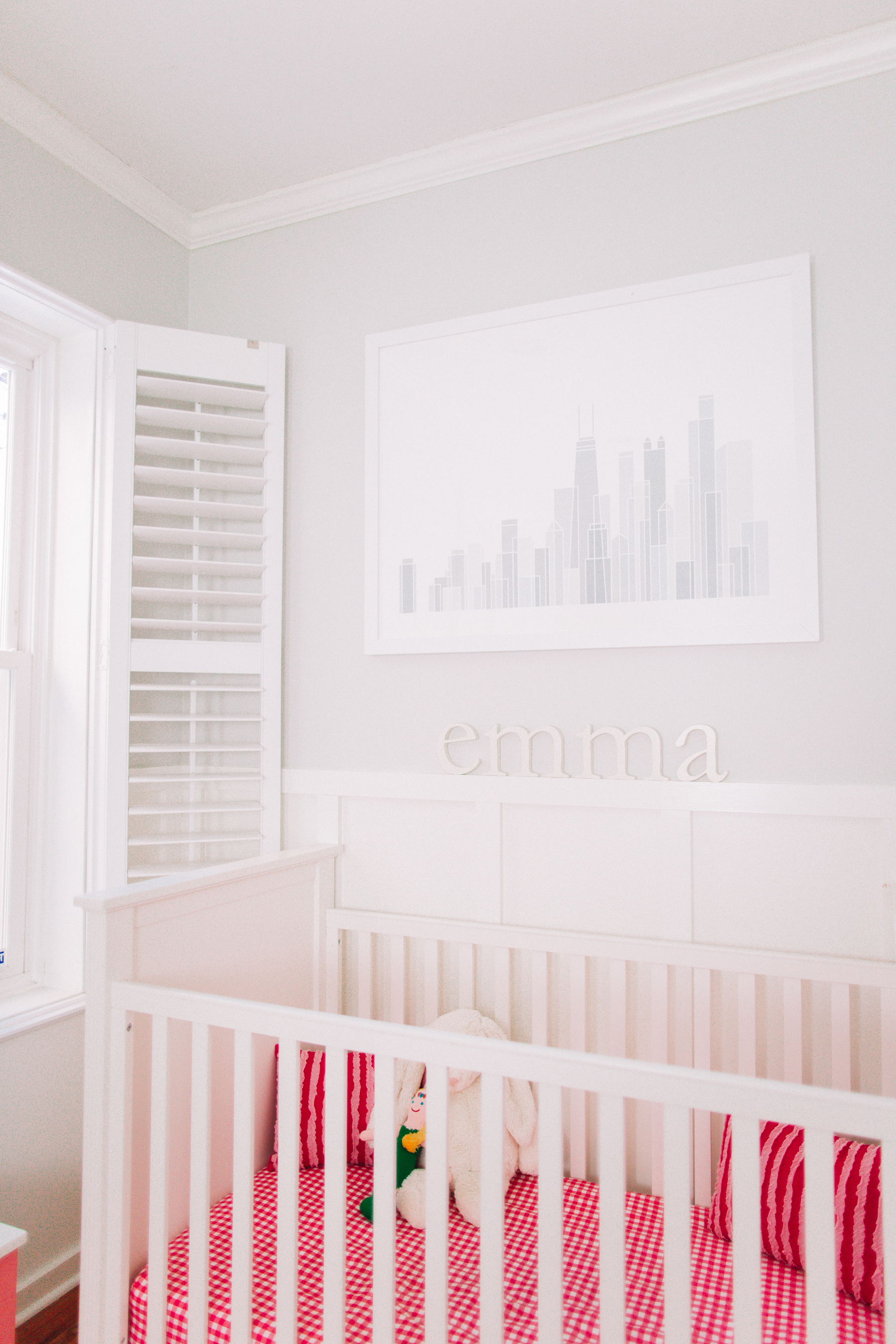
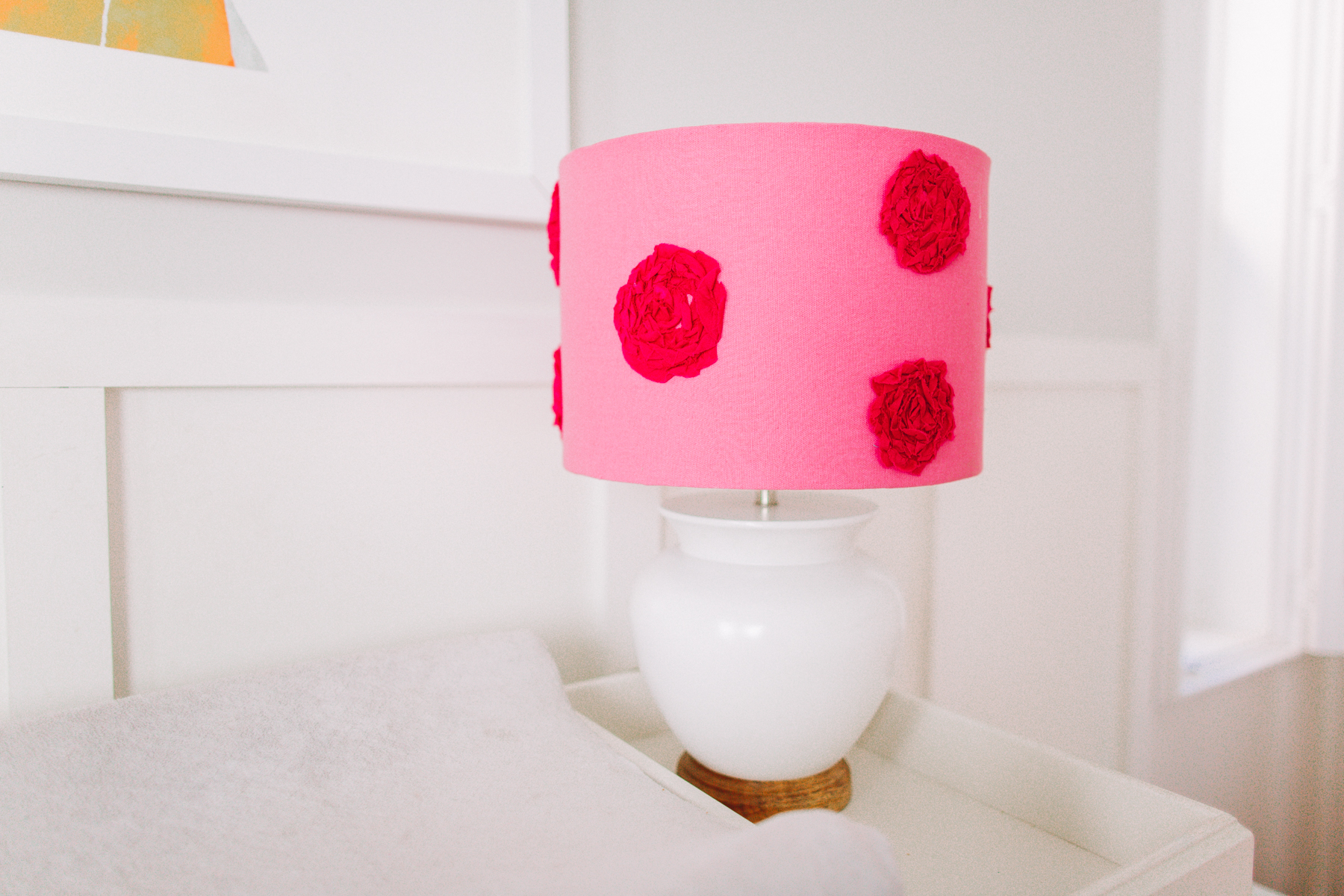
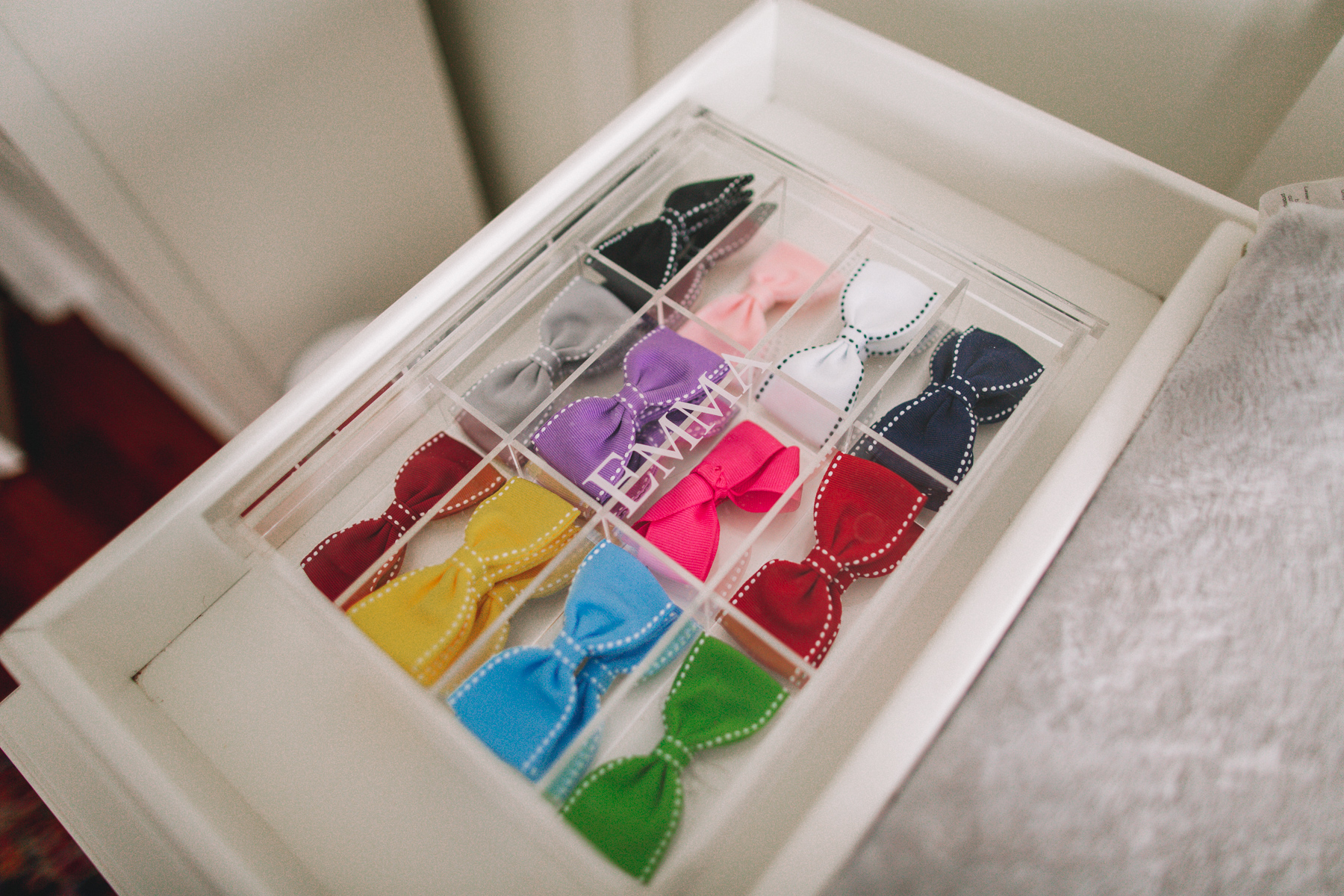
Shop the post:
Pottery Barn Kids’ Crib, Dresser, Changing Pad Cover, Lowercase Letters, Play Kitchen and Bookshelf / Pink Persian Rug (Also love this one!) / Giraffe, Chicago Skyline, Flamingo, Seal and “Twinkle Twinkle” Prints c/o Minted / Gingham Crib Sheet, Princess Bedding, Pink Colorblock Rug, Pink Lamp, Striped Pillows, and Mermaid Dolls c/o / Magic Bunny / Hair Bows c/o / Monogrammed Toy Chest / Giant Teddy Bear

